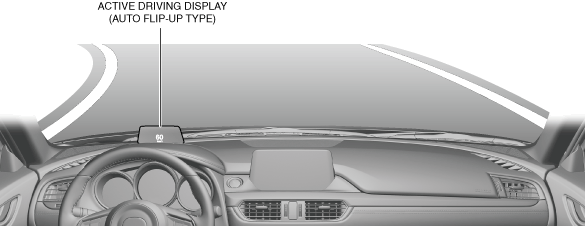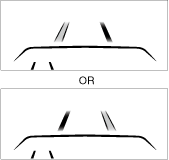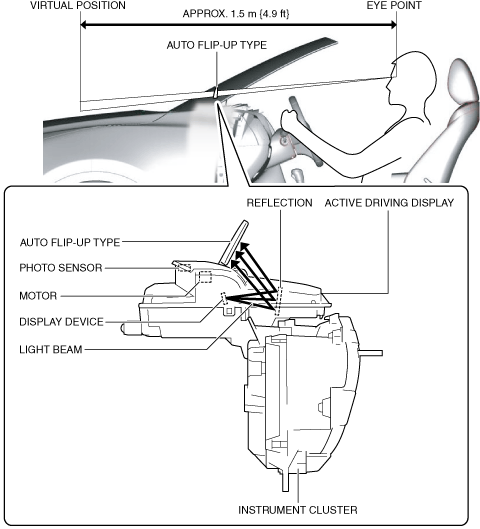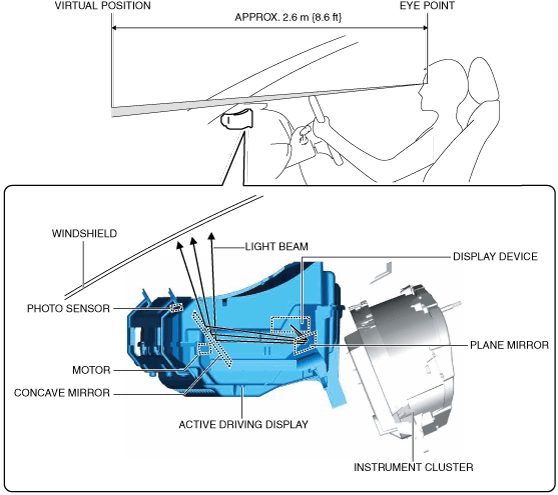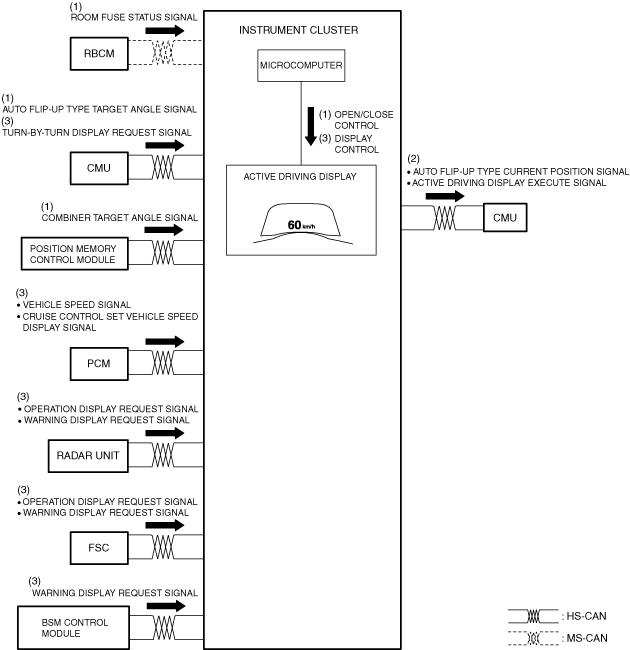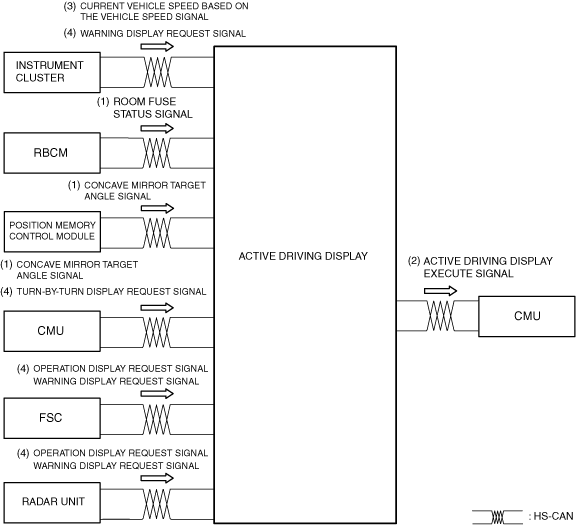|
PCM
|
Vehicle speed signal
|
Current vehicle speed
|
 |
|
|
PCM
|
Cruise control set vehicle speed display signal
|
Cruise control set vehicle speed
|
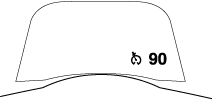 |
|
|
Radar unit (Mazda radar cruise control (MRCC))
|
Operation display request signal
|
Distance between vehicles and MRCC set vehicle speed
|
 |
|
|
Warning display request signal
|
MRCC automatically canceled due to low vehicle speed
|
 |
|
Deceleration exceeding system limits required
|
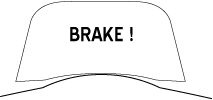 |
|
Radar unit (smart brake support (SBS))
|
Warning display request signal
|
Deceleration exceeding system limits required
|
 |
|
|
Radar unit (distance recognition support system (DRSS))
|
Operation display request signal
|
Distance from vehicle ahead
|
 |
|
|
Forward sensing camera (FSC) (smart city brake support (SCBS))
|
Warning display request signal
|
Warning screen
|
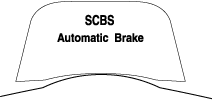 |
|
|
Forward sensing camera (FSC) (lane departure warning system (LDWS))
|
Operation display request signal
|
Vehicle lane display
|
 |
|
|
Warning display request signal
|
Warning screen
|
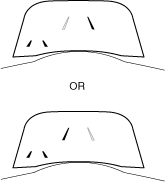 |
|
Forward sensing camera (FSC) (lane-keep assist system)
|
Operation display request signal
|
Vehicle lane display
|
 |
|
|
Warning display request signal
|
Warning screen
|
 |
|
Blind spot monitoring (BSM) control module
|
Warning display request signal
|
Warning screen
|
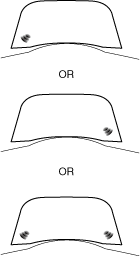 |
|
|
Forward sensing camera (FSC) (traffic sign recognition system (TSR))
|
Speed limit signs
|
Warning screen
|
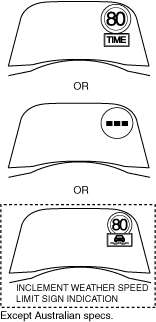 |
|
|
Do not enter sign
|
Warning screen
|
 |
|
Stop sign
|
Warning screen
|
 |
|
Parking assist unit (ultrasonic) (driver attention alert system)
|
Warning display request signal
|
Warning screen
|
 |
|
|
Connectivity master unit (CMU)
|
Turn-by-turn (TBT) display request signal
|
Travel direction display
|
 |
|
|
Instrument cluster
|
Warning display request signal
|
Warning screen
|
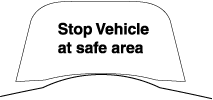 |
|
